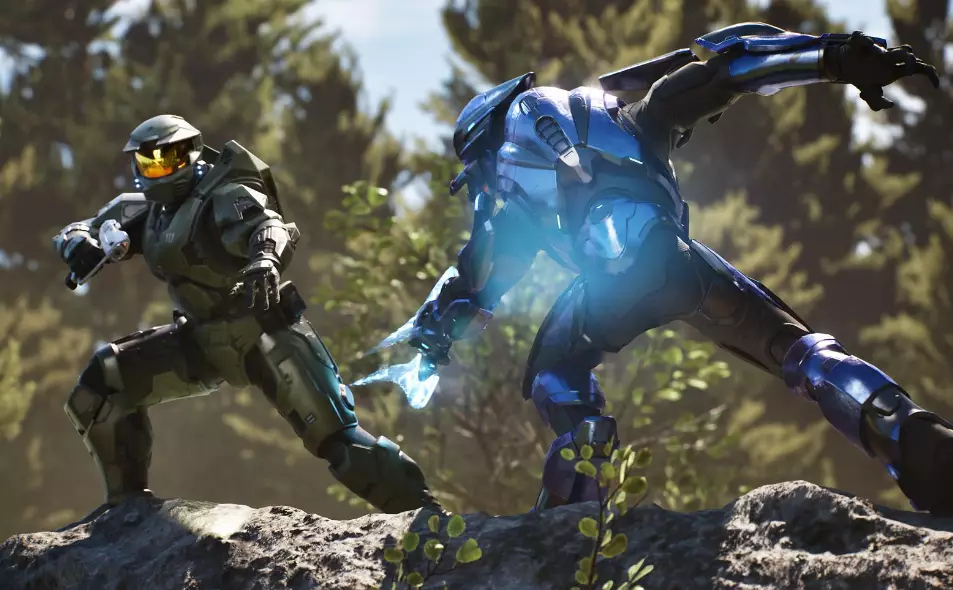Prime Video ventured into the realm of video game adaptations with its ambitious anthology series, Secret Level, which premiered in December. This series aimed to explore the various narratives and aesthetics inherent to video game culture through unique episodes inspired by a diverse range of franchises. However, some of the most iconic titles in gaming lore, such as Halo and Doom, were notably absent, leading to speculation regarding the show’s creative direction and the challenges faced during development.
At the center of this creative endeavor were supervising director Dave Wilson and creator Tim Miller, who recently revealed their attempt to secure rights for a Master Chief and Doom Slayer crossover. Their endeavors weren’t merely footnotes in the show’s creation; they underscored a significant struggle that often plagues adaptations of beloved properties. In his conversation with Collider, Wilson illuminated the complexities faced by the production team, noting that the uniqueness of Secret Level proved to be a double-edged sword. The concept was so new and untested that it raised concerns among development executives already bound by existing partnerships with other companies. Wilson recounted that some executives perceived the project as a potential distraction from ongoing projects, leading to hesitations that ultimately blocked their aspirations for iconic content.
Misunderstandings and Fan Frustrations
While it might be easy for fans to retroactively criticize the show’s choices, Miller’s statement emphasized an active effort on the creators’ part to negotiate with Microsoft for Halo. The community’s assumption that the creative team inexplicably overlooked such blockbuster franchises has reignited conversations around the gaming industry’s overly complex licensing landscape. Miller expressed frustration at being labeled careless in their franchise selection process, clarifying that discussions at least took place. The silent rejection by Microsoft remains ambiguous; however, it emphasizes a common theme in adaptation efforts—corporate decisions often override creative desires.
Despite considerable investment in their pitch to Microsoft, the aspirations of Wilson and Miller met with resistance. The duo dedicated an entire weekend crafting a persuasive letter, passionately advocating for the inclusion of the beloved characters Master Chief and the Doom Slayer. However, their proposal was ultimately declined—an anecdote that illustrates how high the stakes are for adaptation efforts, especially when interfacing with established companies with vested interests in other projects. Although the production team had personal connections at Microsoft, those relationships could not bridge the gap between ambitious creative vision and corporate governance.
Other Partnerships and Missed Opportunities
Interestingly, while Microsoft withheld its groundbreaking characters from Secret Level, the series did land a featured episode focused on The Outer Worlds, a game developed by Xbox subsidiary Obsidian. The show also showcased a variety of Sony/PlayStation franchises, including Concord, Journey, Little Big Planet, and God of War, highlighting an unusual but promising breadth of content. In contrast, the absence of any Nintendo properties from the season raises questions about the barriers between creators and one of gaming’s most cherished legacies.
There were also whispers of an unyielding difficulty when it came to engaging other high-profile gaming franchises. Wilson hinted at approaching multiple intellectual properties during a “big moment,” only for those conversations to fizzle out in the ever-arid landscape of Hollywood dealings. Although specifics remained undisclosed, it indicates a landscape where potential lucrative partnerships often slip through the cracks.
Future Prospects and Fan Reactions
Despite the mixed reviews that have greeted Season 1 of Secret Level, with commentators noting a majority of hits and misses, viewers can look forward to more content down the line. The announcement of a second season hints at potential opportunities for redemption but also raises the inevitable question of which franchises will rise to the occasion. Meanwhile, communities of gamers and fans continue to press for their favorites to receive the screen treatment they so richly deserve. The turbulent experience of the first season, showcasing both aspirations and hindrances, lays bare the uncertainties that define the intersection of gaming and storytelling in contemporary media.


Leave a Reply